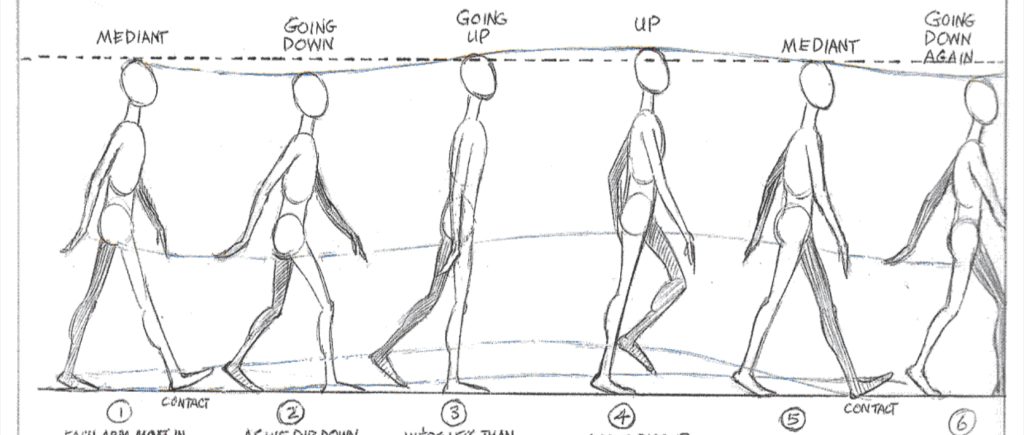Overview
In this lesson, we learned the basic motion law of human walking. On this basis, we recorded our own reference about mood change. And this was my first attempt at stop-motion animation.
Walk cycle
For a standard walk cycle, there are two key positions, two breakdowns, and several in-betweens.
There are a couple of things to notice when we draw the walk cycle. The first is that the swing of the arm usually follows an arc, like a pendulum, slowing in and out on the extreme positions and going fast in the middle.
Besides, when a character is walking, the whole body goes up and down, including legs, arms, hips, shoulders, and spine. Generally, the up-and-down bobbing of the body depends on the mood.

Mood change-An attempt to stop motion
In this exercise, we need to take a video of reference first, and animate a character walking into frame, stopping, and reacting to something that changes their mood.
I used stop motion to do this exercise. In my first attempt, there were a lot of strange problems due to my lack of experience. For example, the magnet position is wrong, can not absorb the iron frame, etc. Different from 2D animation, stop motion almost can only be animated frame by frame, which means it is difficult to control the timing of the animation. And it’s very hard to get the character back to the way it looks after you found a few frames that weren’t done very well and needed to be fixed.
Reflection
After finishing my animation, Cate gave me some advice. I need to emphasize the stopping in the process and give the viewer some reaction time, which can make the character’s reaction stand out even more. So I lengthened the pause and sure enough, my animation looked better.
